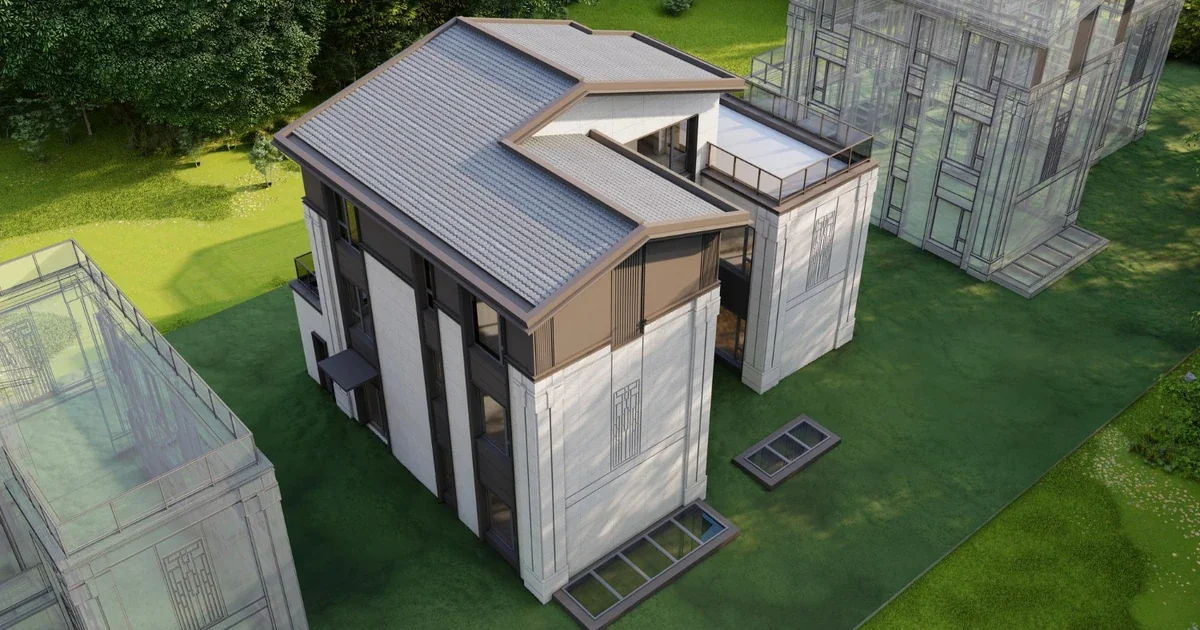Modular vs. Traditional Construction: Speed, Cost, and Durability
July 8, 2025
Recently, interest in prefabricated (modular) construction has increased as a modern option in the construction sector in Saudi Arabia, the UAE, and other countries. This method relies on manufacturing building components in well-equipped factories and then transporting them to the site for assembly, rather than traditional on-site construction. Prefabricated building generally offers faster execution and cost savings, making it an attractive option for real-estate investors and large-scale project owners. In this article from Skyline Holding, we explore the differences between prefabricated and traditional construction in terms of speed, cost, and durability, with a focus on market requirements.
Execution Speed: Prefabricated vs. Traditional Construction
Speed is one of the key advantages of prefabricated construction. Most construction work is performed in a modern, specialized factory environment, where about 90% of the building components are pre-manufactured. At the same time, foundation and infrastructure work is carried out on-site, allowing the main construction phases to progress simultaneously.
Thanks to this parallel workflow, the overall project duration is significantly reduced. Studies show that prefabricated construction can shorten the project timeline by up to 50% compared to traditional methods. For instance, a mid-sized residential project that would normally take 6 to 16 months using conventional construction could be completed in just 6 to 8 weeks with prefabricated units.
In addition, prefabricated construction improves scheduling efficiency by minimizing delays caused by weather or labor shortages. Factory work is conducted in stable conditions, away from climate fluctuations, increasing the likelihood of completing projects on time. This speed also allows properties to reach the market sooner, generating quicker investment returns—a crucial factor for real-estate investors.
Cost Differences Between Prefabricated and Traditional Construction
On another note, prefabricated construction presents major opportunities to reduce overall costs. Industry sources have indicated that choosing modular construction can cut project expenses by around 20% or more compared to traditional methods. This cost efficiency stems from several factors: factory work uses standardized industrial processes that save time and labor, materials can be purchased in bulk at lower prices due to volume, and precise planning minimizes waste. In contrast, traditional construction often incurs extra charges due to on-site changes or material losses.
Additionally, prefabricated construction eliminates many unforeseen costs. Since 90% of the building process occurs in enclosed workshops, modular projects avoid expenses caused by delays from rain or harsh conditions. Moreover, reducing on-site labor duration lowers wage costs, bank loans, and the associated interest. As a result, prefabricated projects benefit from more stable and predictable overall costs—an essential factor for investors seeking tight budget control.
Durability of Prefabricated Construction
Service life and durability are critical benchmarks when evaluating any construction project. In the past, conventional concrete buildings were believed to have a longer lifespan. However, modern prefabricated buildings now rival traditional structures in durability. The materials and designs used in prefabricated units are subject to strict quality controls to ensure they remain intact during transport and assembly. This includes enhanced thermal and structural insulation to withstand harsh weather conditions.
Studies have shown that most prefabricated buildings are designed for long-term use, with expected lifespans reaching 50 years or more—matching or even exceeding traditional buildings. Some sources assert that today’s prefabricated structures are built to higher standards, making them occasionally more durable than conventional concrete buildings. Their lightweight, flexible frameworks and improved insulation contribute to this strength. In Turkey, for example, earthquake resistance is a core part of unit design, allowing engineered flexibility to absorb vibrations without collapsing.
Overall, durability emerges as an added value in prefabricated construction—especially when high-quality materials are used. Like any other structure, it requires periodic maintenance. However, modular units are consistently designed to meet high technical standards, which is why investors find prefabricated construction strikes a balance between speed, reduced costs, and the quality and durability required for both residential and commercial projects.
In conclusion, prefabricated construction offers investors and developers an attractive option that combines rapid project delivery and lower overall costs with reliable durability. With Saudi Vision 2030 plans and development trends in the UAE and Turkey, the adoption of modular construction methods in major projects has grown significantly.
That said, each investor should carefully assess their project’s needs—highly customized designs may sometimes favor traditional methods. In general, a clear understanding of the differences in speed, cost, and durability between both methods enables investors and developers to choose the approach that best fits their goals and budgets.
Read also:
Keywords
What is your budget?
Recommended Articles

December 15, 2025
How to Choose the Right Property in the UAE? 2026 Investor Guide
How to choose the right property in the UAE for 2026. A comprehensive guide covering best areas, ROI calculation, and off-plan buying risks.

November 13, 2025
Turkey’s 2025 Economic Program: How Will It Affect Inflation, the Lira, and the Real Estate Market?
The new Turkish economic program: what it means for investors and how it will impact inflation, the lira, and real-estate investment opportunities in Turkey.

July 8, 2025
Modular vs. Traditional Construction: Speed, Cost, and Durability
A comparison of modular and traditional construction in terms of execution speed, project costs, and durability—essential insights for real‑estate investors.
